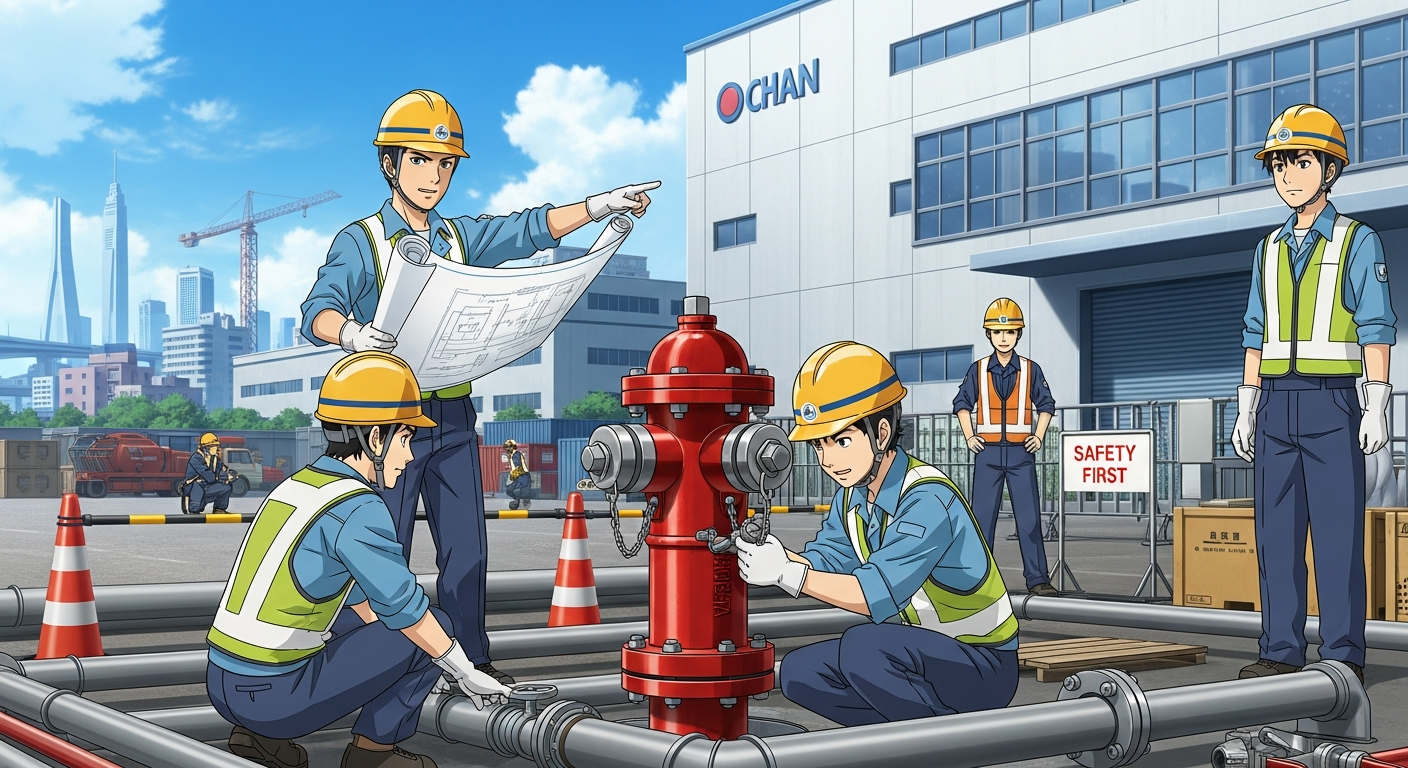Introduction
It was 3 a.m. in a busy Dhaka industrial warehouse when a small electrical spark quickly escalated into flames. Thankfully, the facility’s fire hydrant system activated immediately, controlling the fire until firefighters arrived. The potential loss of property and lives was prevented.
This incident highlights why installing a fire hydrant system in Dhaka is not optional for offices, industrial facilities, or residential complexes—it’s essential. In this article, we’ll explore the importance, process, and benefits of fire hydrant installation, backed by real-world examples, expert insights, and actionable guidance for individuals and organizations.
Why Fire Hydrant Systems Are Crucial in Dhaka
Fire hydrant systems are designed to deliver a high-pressure water supply for immediate firefighting. According to NFPA guidelines, rapid water access can prevent fire spread, reduce property damage, and save lives.
In Dhaka, where densely packed offices, apartments, and industrial sites increase fire risk, a functioning hydrant system is a critical safety measure. Experts agree that buildings without proper hydrant installations face significantly higher vulnerability during fire emergencies. A recent survey by the Dhaka Fire Service Department revealed that over 40% of industrial fires could have been mitigated with proper hydrant systems.
Common Misconceptions About Fire Hydrants
Many facility managers assume that simply having extinguishers or sprinklers is enough. While these tools help, a hydrant system provides immediate water access across multiple floors and zones.
For instance, an apartment complex in Gulshan faced a minor kitchen fire that escalated quickly. The absence of a hydrant system forced firefighters to rely on external hoses, delaying control and causing unnecessary property loss. Properly installed hydrants, along with trained staff, could have contained the fire instantly.
Components of a Fire Hydrant System
A typical hydrant system includes fire pumps, pipes, valves, hydrant valves, hoses, and nozzles. Each component must meet international standards such as BS EN 12845 or NFPA 14.
Consider the example of a large warehouse in Uttara. The fire pumps maintained constant pressure, and the hydrants distributed water to the exact zones where fire broke out. The incident ended with minimal damage, demonstrating how each system component contributes to overall safety.
Installation Process in Dhaka
Installing a fire hydrant system requires careful planning. First, professionals assess building layout, occupancy, and potential fire hazards. Next, pipes and hydrants are positioned strategically for maximum coverage. Finally, pumps and controls are calibrated to ensure immediate water flow.
An industrial facility in Banani followed a step-by-step installation process and conducted multiple tests before activation. When a minor electrical fire occurred months later, the system’s immediate response prevented escalation. This highlights the importance of professional installation and routine testing.
Maintenance and Regular Inspection
Installation is only half the solution. Hydrant systems require periodic maintenance to ensure readiness. According to NFPA 25, annual inspections and quarterly flow tests are recommended.
In a recent case, a Dhaka office detected a minor pump malfunction during a routine inspection, preventing a potential disaster. Maintenance ensures that hydrants are always operational when emergencies strike.
Fire Hydrant Systems vs. Sprinklers
While sprinklers control fire locally, hydrant systems provide scalable water access for larger fires. Industries handling chemicals, electrical equipment, or large storage areas particularly benefit from hydrant installations.
A garment factory in Mirpur utilized both systems during a small electrical fire. Sprinklers suppressed flames locally, while hydrants allowed firefighters to target multiple zones simultaneously, illustrating the complementary role of both systems.
Training Staff for Emergencies
Even the best hydrant system fails if staff is unaware of its operation. Training programs ensure employees know how to access hydrants, connect hoses, and operate valves safely.
Consider a tech company in Dhaka where newly trained employees acted swiftly during a fire drill. Their confidence reduced evacuation time and demonstrated how education enhances system effectiveness.
Cost Considerations and ROI
Many companies hesitate due to perceived costs. However, the return on investment is substantial. According to Insurance Journal data, properties with hydrant systems report significantly lower fire-related insurance claims.
Investing in hydrants not only protects employees and property but also reduces downtime, operational loss, and potential legal liabilities after a fire incident.
Real User Questions Addressed
How fast can a fire hydrant system control a fire in Dhaka’s industrial areas?
With proper installation and maintenance, hydrant systems can begin suppressing fires within seconds of activation. Case studies across Dhaka show reduced fire spread and minimal property damage.
Can hydrant systems be installed in older buildings?
Yes, retrofit installations are possible. Professionals evaluate existing structures and integrate pipes and valves with minimal disruption. Successful retrofits in Banani and Gulshan illustrate feasibility and effectiveness.
Conclusion
Fire hydrant system installation in Dhaka is more than compliance—it’s a critical safeguard for life, property, and business continuity. Real incidents demonstrate that professional installation, regular maintenance, and staff training dramatically reduce risk.
Don’t wait for a fire to remind you. Explore trusted fire hydrant installation services today, implement comprehensive safety measures, and ensure your employees, property, and operations remain secure.

